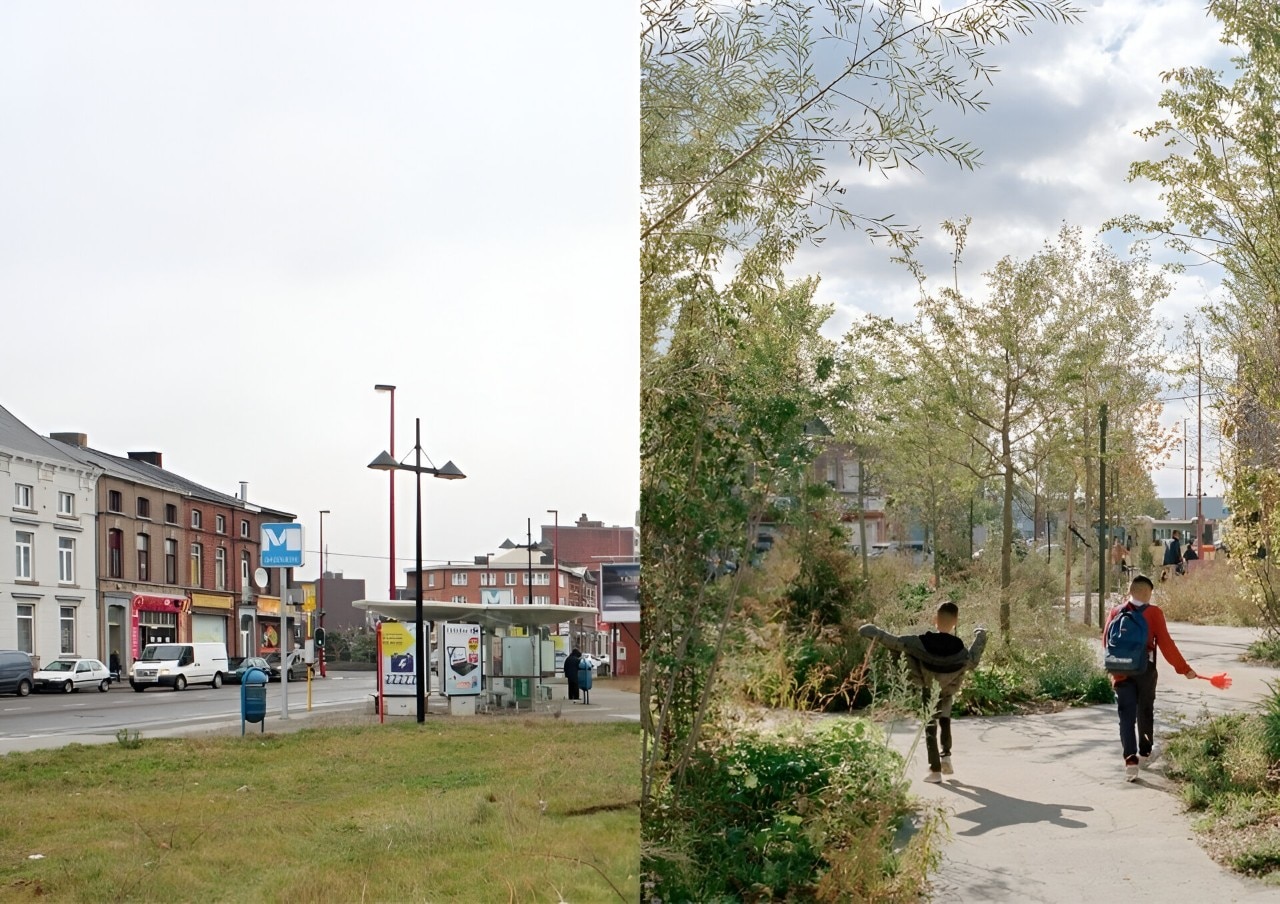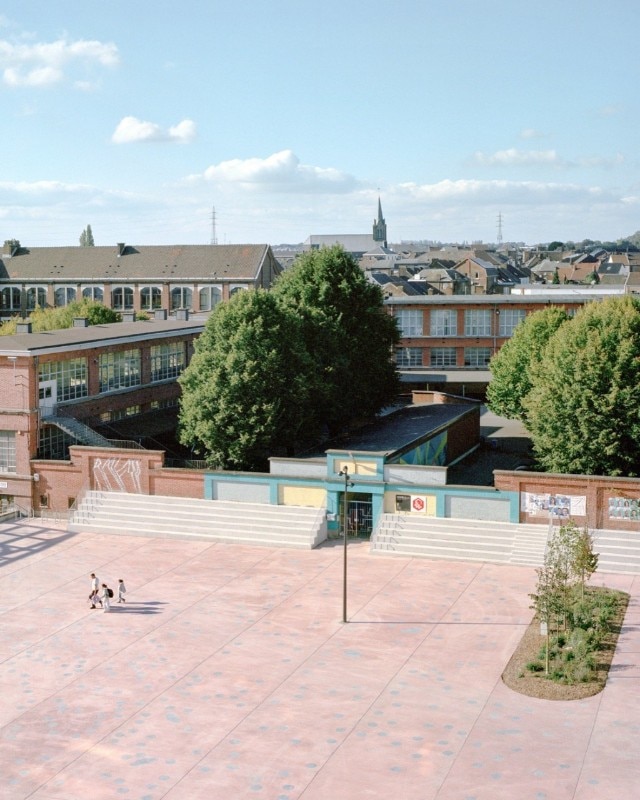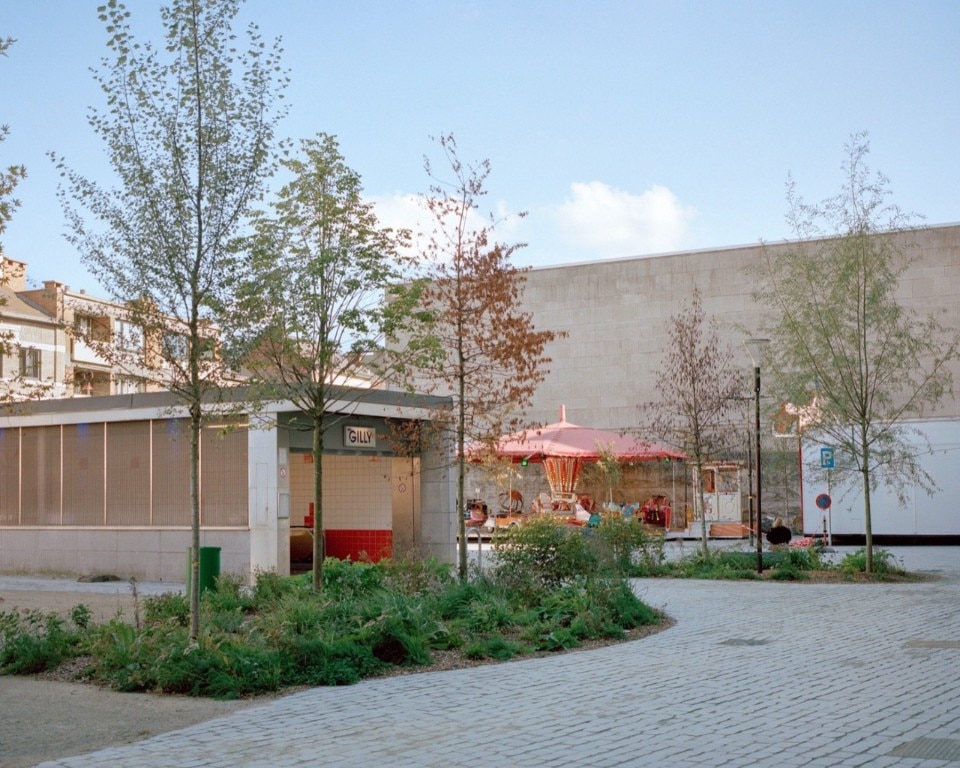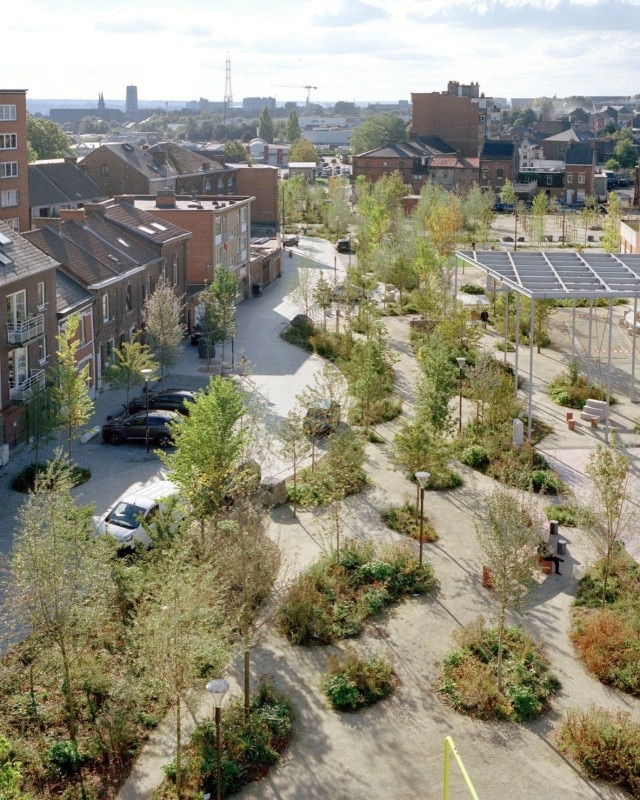In the fragmented heart of Gilly, a post-industrial suburb of Charleroi, the Belgian studio CENTRAL proposes a quiet regeneration. The project, winner of EUROPAN 13, tackles the issue of urban stitching not through spectacular gestures, but through an ecological transformation that is both fine-grained and deeply connected to its context.
The intervention focuses on the Destrée neighborhood, currently dominated by a large open-air parking lot, around which public buildings are scattered and disconnected. Rather than imposing a new form onto the city, CENTRAL chooses to work with existing logics, amplifying and redirecting them toward a vision of inclusive urbanity, where nature is no longer a backdrop but a central actor.
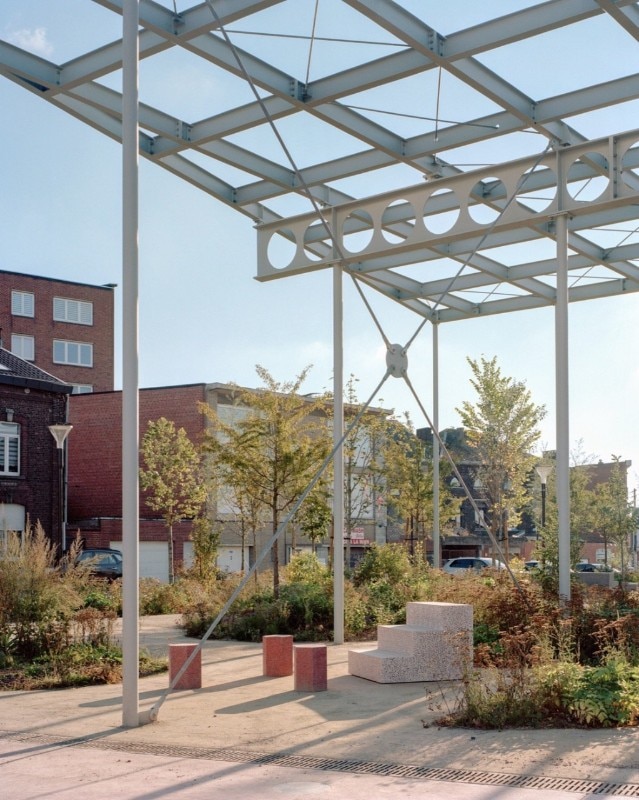
Three core strategies structure the project. The first is the creation of an urban forest — a regenerated ecosystem that functions as both an environmental and social infrastructure, connecting the disjointed parts of the city. The second involves the reconfiguration of Place Destrée, formerly just a surface for cars, into a large, flexible public square designed to host markets, events, and everyday social encounters.
Lastly, the project engages with the existing sports complex, currently isolated, opening it up to the city and expanding it with a new pavilion for boxing and collective activities. Here too, architecture serves the process: it does not create a monument, but a place for everyday use.
Around these three main axes, a series of “tailor-made” micro-interventions are deployed, conceived as a kind of urban acupuncture. Some are minimal — such as reorienting traffic or introducing shaded areas — while others are more expressive, like new play spaces, communal furnishings, or fountains. In every case, the goal is to activate new relationships between people and their environment, between the human and the non-human.
The collaboration with the landscape firm Plant & Houtgoed reinforces the project’s ecosystemic approach, aiming to reintroduce biodiversity as a lever for urban transformation. Existing trees are preserved and integrated, while new native species are selected to attract wildlife and regenerate the soil.


